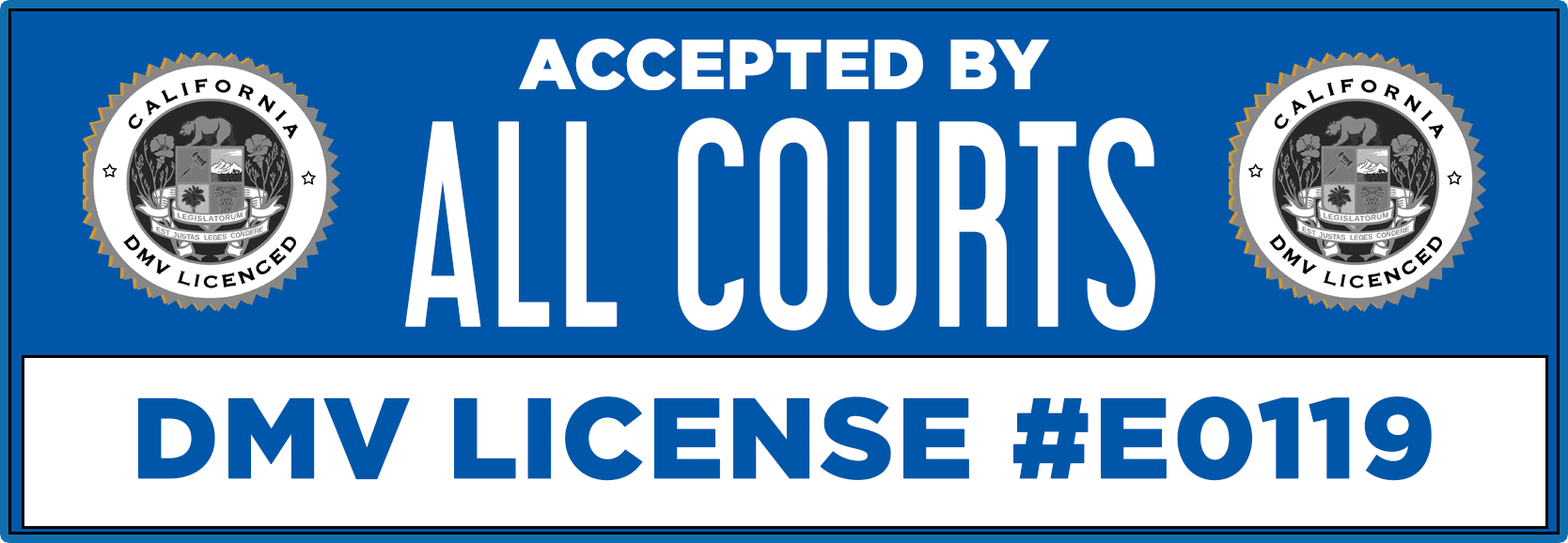Backing up is one of the most common maneuvers that can lead to accidents, particularly in busy areas or driveways with limited visibility. By following a few key safety steps, you can significantly reduce the risk of collisions and ensure that you’re backing up safely and effectively. This guide outlines essential practices to help you confidently navigate this often tricky driving situation.
Backing Up Accident Stats for 2024
As of 2024, backing up is a significant contributor to vehicular accidents, particularly in urban and residential environments. National statistics indicate that one in four vehicle accidents occurs while a driver reverses. In California, where dense traffic and busy parking lots are common, the likelihood of a backing-up accident increases, particularly in congested areas.
Additionally, studies show that 30% of all accidents in parking lots involve vehicles backing up, with many incidents resulting in minor fender-benders, though some can lead to severe injuries or fatalities, especially involving pedestrians. Unfortunately, children are among the most vulnerable in these scenarios, often being struck in driveways and parking areas. These statistics underscore the importance of adopting safe backing-up practices to minimize risks.
Common Scenarios When You Will Back Up In Your Car
Backing up is a routine driving maneuver that occurs in several common situations:
- Parking and Exiting Spaces: Whether in a shopping center or a residential driveway, backing into or out of parking spaces is one of the most frequent scenarios drivers must reverse.
- Driveways: Many accidents happen when drivers are backing out of their driveways, especially in residential areas where pedestrians, children, or pets may be present.
- Parallel Parking: Reversing is essential when parallel parking on city streets. This maneuver requires careful attention to surrounding traffic and pedestrians.
- Traffic Situations: Occasionally, drivers may need to back up if they’ve overshot a stop line at an intersection or to avoid an obstacle in the road. However, this is often not recommended and can be illegal in certain areas.
- Loading and Unloading: In situations where you’re loading or unloading items, such as at a loading dock or near a curb, you may need to back up to position your vehicle correctly.
- Navigating Tight Spaces: In narrow alleyways, dead-end streets, or crowded parking lots, backing up may be necessary to maneuver or exit.
- Avoiding Hazards: If a road hazard or obstacle is encountered suddenly, drivers might need to back up to avoid it or to change direction.
3 Rules When Backing Up Safely
Backing up safely requires careful attention to your surroundings and a cautious approach. Following these three essential rules can minimize the risk of accidents and ensure a safer driving experience.
- Always Check Your Surroundings Before Reversing: Before you even start your car, take a moment to walk around your vehicle to check for any obstacles, particularly low-lying objects, children, or pets, that might be in your blind spots. Once inside, turn your body and look over your shoulder instead of relying solely on mirrors or backup cameras.
- Go Slow and Steady: Always proceed slowly and cautiously when backing up. This gives you more time to react to unexpected obstacles and reduces the likelihood of a collision. Keep your speed at a crawl, and be prepared to stop immediately if necessary.
- Use a Spotter When Possible: If you’re backing up in a challenging situation or a large vehicle like a truck or van where visibility is limited, it’s best to have someone outside the vehicle guide you. A spotter can help ensure you’re clear of obstacles and provide direction when your visibility is obstructed.
Common Backup Techniques
Mastering various backup techniques can help you navigate different driving situations with confidence. Whether you’re parking or making a turn, these techniques provide the skills needed to back up safely and efficiently.
- Straight-Line Backing: This is the most basic backing-up technique, in which the vehicle is reversed in a straight line. To do this safely, align your vehicle with the lane or parking space, check your mirrors, and look over your shoulder to ensure no obstacles. Move slowly and keep the steering wheel steady to maintain a straight path.
- Parallel Parking: When parallel parking, pull up alongside the vehicle in front of the desired parking space, leaving about two feet of clearance. Shift into reverse, turn your steering wheel towards the curb, and back up slowly. Once the rear of your vehicle is about halfway into the space, straighten the wheel and continue reversing until you’re fully parked, adjusting as needed.
- Back-In Parking: This technique involves reversing into a parking spot rather than pulling forward. Approach the space at a slight angle, check for traffic, and back in slowly while turning the steering wheel towards the space. This method allows for easier and safer departure, as you can drive forward out of the spot when leaving.
- Three-Point Turn: Also known as a K-turn, this technique turns your vehicle around in a small space by backing up. Begin by pulling to the side of the road or into a driveway, then turn the wheel sharply to one side and reverse the vehicle, followed by another sharp turn to position the vehicle in the opposite direction.
- Angle Parking: When backing out of an angled parking space, reversing slowly while checking both sides for approaching traffic is crucial. Start by turning the wheel sharply in the direction you want to go, ensuring that your vehicle clears any adjacent parked cars as you back out.
By practicing these techniques and following safe backing-up procedures, drivers can significantly reduce the risk of accidents and ensure smoother, safer maneuvers.
8 Steps for Safely Backing Up While Driving
Backing up is one of the most common causes of fender-benders, and it can be especially dangerous if not done carefully. Follow these steps to ensure you back up safely:
Step 1: Visually Clear the Area Behind Your Vehicle
- Check Behind the Vehicle: Before getting into your car, walk around the back to ensure there are no children, pets, or objects that might be in your blind spot.
- Use a Spotter: If available, have a second person act as a spotter to guide you and help ensure the area is clear.
Step 2: Position Yourself Correctly
- Turn and Look Over Your Right Shoulder: Do not rely solely on your mirrors. Turn your body and look over your right shoulder to see what’s directly behind you.
- Use Mirrors Sparingly: While mirrors are helpful, they should not be your primary method for checking behind you.
Step 3: Check Your Surroundings
- Check Traffic: Look in both directions for oncoming vehicles or pedestrians that might cross behind you.
- Ensure Legality: Make sure it’s legal to back up in your current situation. For example, it’s illegal to back up on freeways in California.
Step 4: Prepare to Back Up
- Release the Parking Brake: With your left hand on the steering wheel, release the parking brake.
- Control Your Speed: Slowly release the foot brake. If necessary, gently apply the accelerator, but be ready to brake immediately.
Step 5: Back Up Slowly
- Proceed at a Crawl: Keep your speed low to maintain control and avoid collisions.
- Check the Front Occasionally: If backing up takes a few seconds, glance forward to ensure you’re aligned properly and that nothing has entered your path.
Step 6: Handle Difficult Maneuvers with Extra Caution
- Backing Around Corners: Stop slowly if you cannot see clearly. Wait until you see traffic, pedestrians, or obstacles clearly.
- Ask for Help: If you’re in a tight spot or your movement is restricted, ask a passenger or someone nearby to guide you out.
Step 7: Avoid Backing Up When Possible
- Choose Forward-Parking Spots: Whenever possible, select a parking spot that allows you to drive forward when leaving rather than backing out.
- Back Into Parking Spots: If you must back up, do so when you first park so you can exit the spot moving forward. This gives you a clearer view of the area when leaving.
Step 8: Be Aware of Legal and Safety Restrictions
- Avoid Backing Up Through Crosswalks: If you accidentally stop beyond a stop line or in a crosswalk, staying where you are is safer than backing up.
- Know Where It’s Illegal: Backing up is prohibited on controlled-access highways, including shoulders, off-ramps, and access roads.
By following these steps, you can reduce the risk of collisions and ensure you’re backing up safely and legally.
Backing up may seem like a routine part of driving, but it carries significant risks if not done carefully. By following the safety rules, mastering essential techniques, and staying aware of your surroundings, you can greatly reduce the likelihood of accidents and protect yourself and others on the road. Remember, taking a few extra moments to ensure you’re backing up safely can make all the difference in avoiding potential hazards and ensuring a smooth, accident-free driving experience.





